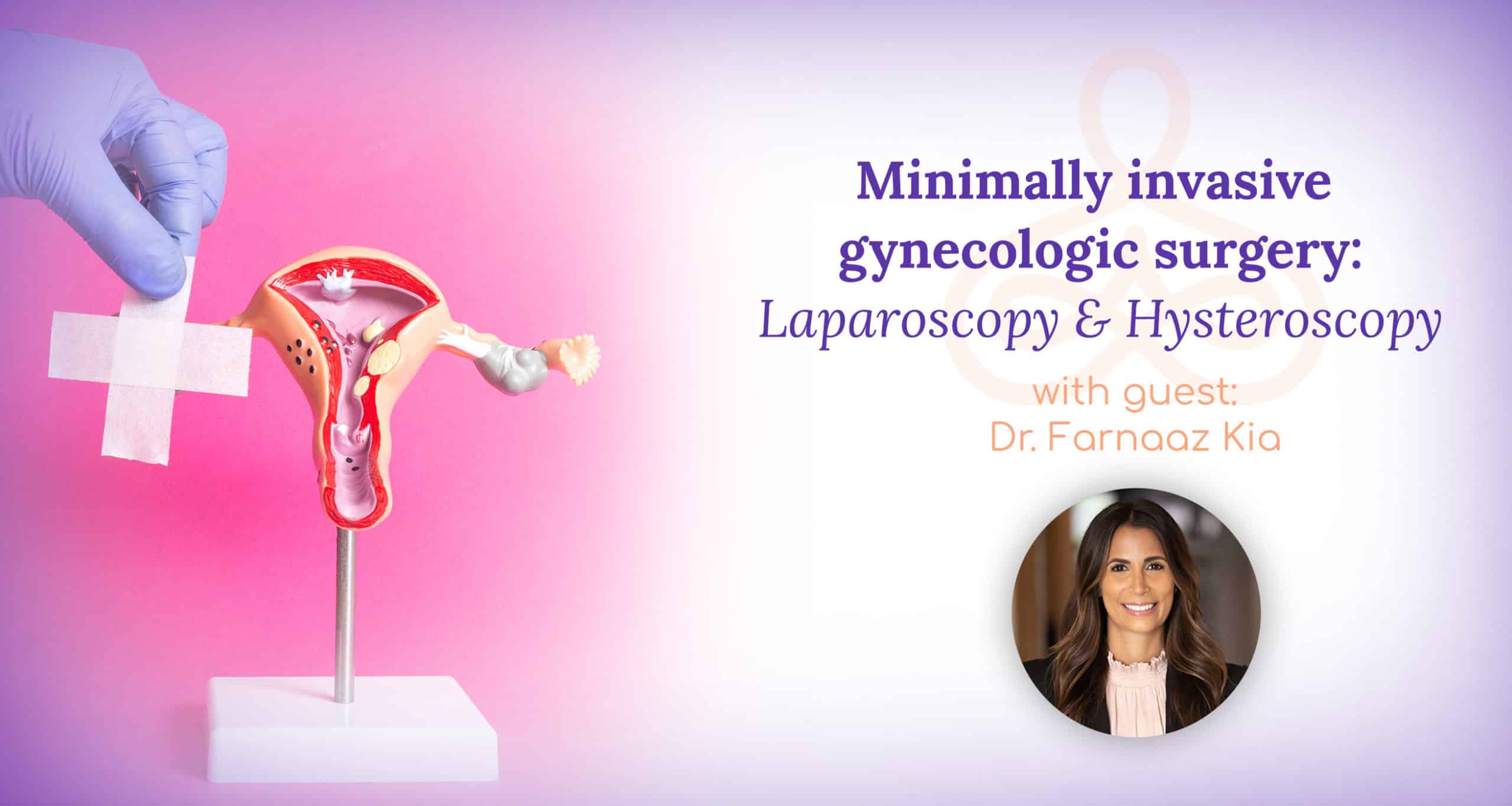In this episode of Healthful Woman podcast, Dr. Fox is joined by Dr. Farnaaz Kia, an OBGYN at MFM Associates, to speak about laparoscopic or minimally invasive procedures as opposed to traditional open surgeries.
When it comes to gynecologic surgery, minimally invasive procedures have become increasingly popular over recent years instead of open surgery. While minimally invasive surgery is usually done laparoscopically, which involves very small incisions, maximally invasive surgery, or open surgery, is a major surgery that involves a large incision across the entire abdomen. A common example of open surgery includes a C-section.
Types of Minimally Invasive Gynecologic Surgery
The two most common minimally invasive gynecologic surgeries performed today include laparoscopy and hysteroscopy, which are utilized to diagnose and/or correct gynecological problems. These minimally invasive procedures allow for patients to return home the same day to heal, unlike open abdominal surgery which may require 2-3 nights in the hospital. Patients also experience less pain, heal faster, and experience fewer complications with minimally invasive surgery.
Laparoscopic surgery is a minimally invasive procedure to view the inside of the abdominal wall and the organs in the abdomen. Nowadays, many procedures can be performed laparoscopically including hysterectomy, ectopic pregnancy treatment, laparoscopic bilateral tubal ligation, salpingectomy to remove fallopian tubes, and the removal of ovarian cysts and fibroids, among others. In some cases, even cancer can be treated laparoscopically.
Hysteroscopy is a minimally invasive procedure to look inside the uterus. “We put a camera through the cervix and descend the uterine cavity with usually saline or lactated ringers,” explained Dr. Kia. “And we look around and can see inside the uterus. You can have a diagnostic hysteroscopy where you’re just looking, or if you have polyps or small fibroids that are inside the uterus and along the lining, you can actually operate through that little camera too.” Nowadays, this procedure can oftentimes be performed in the office in just 30 minutes, making it very convenient for patients.
Who is a Candidate for Minimally Invasive Surgery?
Because every patient is unique in diagnosis and health background, it is important to have a discussion with your doctor regarding your candidacy for minimally invasive surgery. Some patients who, for example, require the removal of one small fibroid may be a good candidate for minimally invasive surgery compared to someone who has 20 large fibroids that need to be removed. And if a patient is uncomfortable with their doctor’s answer, they can always get a second option. “Unless it’s an emergency, these are things you can get a second opinion on,” said Dr. Fox.
To learn more about minimally invasive gynecologic surgery, please contact our office today to schedule a consultation appointment with one of our skilled OBGYNS.
An advanced form of laparoscopic surgery is called robotic surgery. This form of surgery involves the surgeon sitting at a console that allows for the control of surgical instruments and a camera to complete the surgery. “It’s a console that you sit at,” explained Dr. Kia.” And there’s this robotic arm that has the instruments that are then inserted through the abdomen. The surgeon can put their head into the console and they see the camera where they’re operating.”

